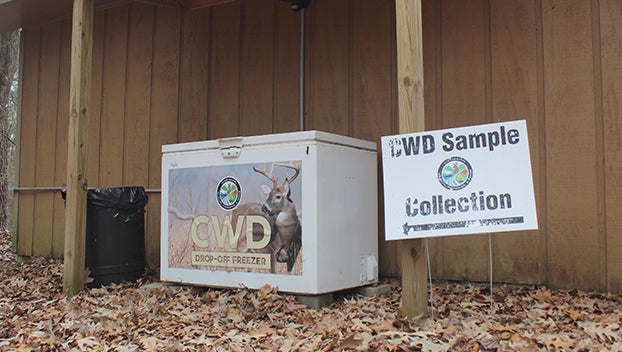No new reports of snakeheads in Louisiana
Published 12:54 pm Tuesday, June 13, 2023

- Natchez resident and Monterey coach Patrick Wells captured video of this snakehead near Minorca in Concordia Parish. Snakeheads are a non-native species with the potential to be an invasive species like Asian/Silver carp. (Submitted Photo )
|
Getting your Trinity Audio player ready...
|
MINORCA, La — It has been a little over a week since the first sighting of an invasive snakehead in Concordia Parish and no new sightings have been reported. Anglers have yet to harvest a snakehead in Louisiana and report it.
Robert Bourgeois, Aquatic Nuisance Species Coordinator with the Louisiana Department of Wildlife and Fisheries, said he would be monitoring for any reports of the invasive species since its first detection in Louisiana on June 4, 2023. Mississippi River levels are dropping which means the access to sample for Northern Snakeheads would be difficult right now, he said last week.
Snakeheads are originally from Asia and do not have a native predator in Louisiana. Bourgeois said the good news is in the 11 other states there has not been any reported major impact on native fish as first feared by fisheries managers, but the LDWF are still concerned about the invasive species.
Patrick Wells, a Natchez angler, took video of Louisiana’s first snakehead sighting on Old River near Minorca, Louisiana. He has since tried to catch one to no avail. Bourgeois said it might take some time for more sightings to come in.
“This is typical for invasives, reports are slow at first. Then they will possibly pick up,” Bourgeois said. “Snakeheads are often found in different locations than what most people fish since it is found in weedy marginal habitat.”
Similar to Gar, snakeheads will gulp air to take in oxygen in low oxidized environments. They can tolerate shallow, low oxygen conditions protecting them from potential predators.
Mississippi Department of Wildlife, Fisheries and Parks reports snakeheads have a similar diet to bass such as frogs, crawfish, baitfish and panfish. Lure selection should be similar to bass but you might need stronger tackle due to the strong fish.
Snakeheads have a similar textured meat as garfish do. Maryland Department of Natural Resources reports the meat is similar to any flaky white fish such as halibut, haddock, whiting, or even striped bass. It is legal to catch and keep dead snakeheads and safe to consume them.
Bourgeois said according to his research the fish has two breeding periods in early spring, May, and late summer, August.
“I suspect that is when we will see most reports of sightings as they guard the babies.”
Details distinguish native from invasive
The Louisiana Department of Wildlife and Fisheries said the name snakehead comes from the enlarged scales that cover their heads. These fish can grow up to 3 feet in length and can bear a similar appearance to native Bowfin, also known as choupique.
Anglers can distinguish between native Bowfins and invasive snakeheads thanks to a few details. Bowfins have a black spot at the base of its tail and a short anal fin while snakeheads have an elongated anal fin and a lower jaw protruding past the upper jaw. You can look at a LDWF brochure to better see the difference between snakeheads and bowfins.
If you do happen to see or catch a snakehead be sure to take a side view photo of the fish, kill it, freeze it and contact Bourgeois at rbourgeois@wlf.la.gov or 225-765-0765 or contact the LDWF aquatic invasive species hotline at 225-765-3977 or via email at AquaticInvasives@la.gov. Make sure you note the exact location of the catch to aid the department in determining the range and size of population to aid management strategies.






